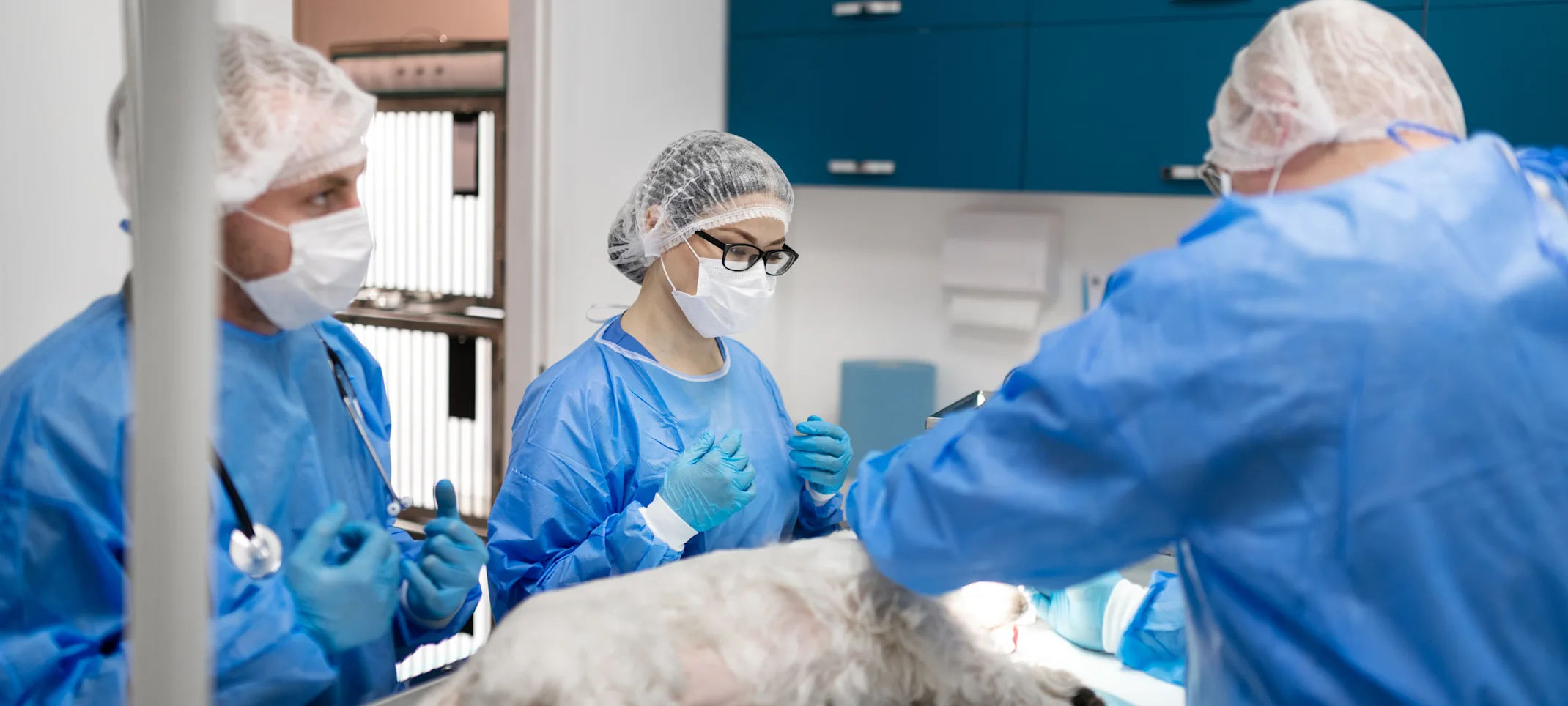Animal Specialty & Emergency Center of Brevard
Hit By Car
If you discover that your pet has been hit by a car, approach with caution. Be sure you are safe from oncoming traffic and avoid being bitten by the injured animal.

The pet should be safely removed from the roadway quickly and carefully so that you, your pet and approaching motorists are safe from further accidents. Once the pet is moved from the roadway, checked to see if it is breathing. If there is no breath or pulse, CPR can be performed.
Any injured animal should be muzzled for your own safety.
The only exceptions to this would be:
An animal with chest injuries
Short nosed breeds (brachycephalic breeds like Pugs)
An animal that is vomiting
Pet owners need to try to remember that after a dog or cat has been hit by a car, its first instinct is to flee and to ignore pain. In nature this instinct protects animals from predators, but for domesticated animals it can cause more problems. Very carefully examine every part of your pet and watch for signs of labored breathing or pain response. It is important to take your pet to a veterinarian immediately after a car accident, even if the pet seems to be okay after the incident. Even if the pet is not obviously bleeding, the possibility that they have internal injuries is very high.
Moving the injured animal
Be sure to minimize head, neck and spinal motion.
A flat and firm piece of wood or cardboard can be used for supportive movement.
Cats can be placed in boxes to decrease stress related to the transport.
Breathing
If the animal is not breathing, mouth-to-nose resuscitation & chest compressions can be performed.
Close the animal’s mouth and place your lips over the nostrils giving 3-4 strong breaths initially. If the animal does not start breathing on its own, 10-12 breaths should be given per minute.
If there is no heartbeat, perform 5 chest compressions and 1 quick breath.
Bleeding
Press down on the bleeding site with fingers/palm and apply a secure bandage using long pieces of fabric or gauze.
If the material applied becomes soaked with blood, do not remove it, just add more material and continue applying pressure. Duct/packaging tape can be used to secure the bandage if necessary.
Burns
Large and deep burns, chemical burns, and electrical burns and any burn of the face/airway need immediate attention.
Cold water can be applied to the area and covered with a nonstick dressing.
Foreign Objects
Do not remove any objects that have penetrated the skull, chest or abdomen.
Prevent further movement of the object.
Call your veterinarian or emergency animal hospital to let them know you are coming. They may also be able to assist you with first aid and initial treatment for shock. It will be helpful to you and the veterinarian if you can explain the situation and any related injuries.
Evaluation and Initial Treatment at the Veterinary Hospital
The most life-threatening problems will be treated first. Upon arrival to the hospital, the staff will quickly assess your pet’s condition and assign priority of care to each problem. There will be questions regarding the situation to gather more information that the staff may not be able to determine from physical findings alone.
The veterinarian will probably use several tests to assess your dog’s injuries, including:
Blood tests
X-rays
Ultrasound
Shock will be treated using:
Intravenous fluids
Administration of steroids
Administration of sedatives
Heat support
Oxygen support
Other supportive care methods
Pain can be controlled through pain relieving medications.
If the dog requires immediate surgery to repair broken limbs or organ damage then the dog will be anesthetized and the surgery will take place as soon as possible. How long the dog will need to stay in the hospital depends on the severity of the injuries.
Our emergency veterinarians have years of experience and training with pets that have been hit by a car. Call us at 321-725-5365 and speak to one of our emergency staff members.
